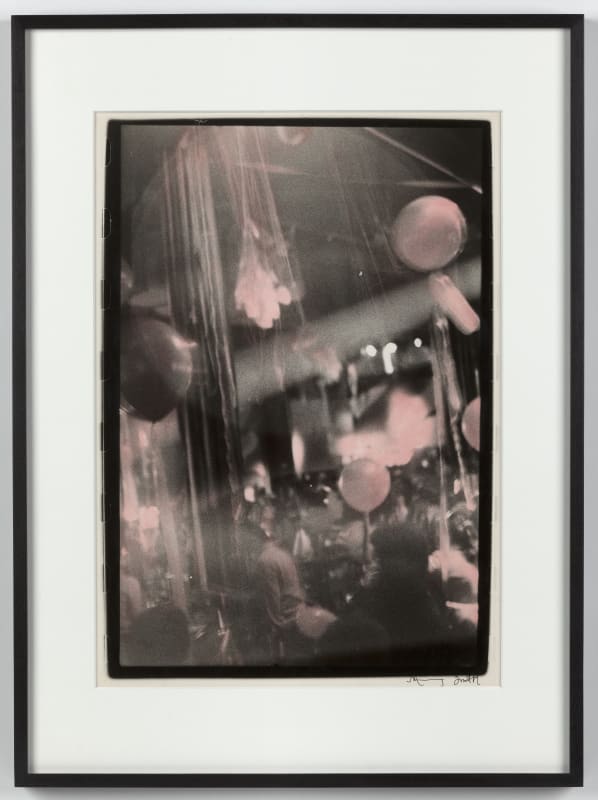Pippy Houldsworth Gallery is pleased to present A Dream Deferred, an exhibition of unique vintage prints and rare hand-painted photographs by New York-based artist Ming Smith. This marks the artist’s inaugural physical exhibition with the gallery, and her first solo show in the UK. Smith’s multifaceted practice brings visibility to Black culture through its exploration of the complex environments and emotional states of her subjects.
The exhibition foregrounds a selection of Smith's previously unseen overpainted photographs. Applying vibrant and energetic marks to the surfaces of her silver gelatin prints, the artist further develops her aesthetic language, imbuing the images with a heightened emotional resonance. In Pan Pan Lady (Betty), 2006, Smith adorns the hat of a wistful elderly woman standing at a diner counter with jewel-like marks, intimately raising her status and further drawing our attention to a life that has not been easily lived. The young man in Setting the Stage, 1976, c. 2000, struggles against the elements as he erects a tent for a show. Blue, red and yellow swirls dance atop the print’s surface, manifesting the sense of a building storm. In these painted works Smith articulates and extends the lexicon of her photography, using colour to enhance her emotional and universal language.
In dialogue with these works is a grouping of vintage prints from Smith’s Invisible Man series (1988–91), the title of which is taken from Ralph Ellison’s novel of the same name. Often photographed at night without flash, they are groundbreaking in their experimentations with light, double exposure and blur. Recurring across a series of photographs is the radical Afrobeat artist and multi-instrumentalist Fela Kuti, who energetically dances across the stage with a large ensemble moving behind him as one. The very nature of Kuti’s high-tempo performance combined with Smith’s slow shutter speed creates images where, at times, her subject is obliterated by light and in others his profile is submerged in shadow. Immortalising this performance with a visual sonority that replicates the freedom of the music being performed, Smith entirely rejects the classical tenet of the photographer’s reliance on a still or posing subject. In Grandmother’s Purse, an African American lady dressed in her ‘Sunday Best’ tentatively bends down toward two young children, her face in shadow whilst her white lace dress centres the scene. Blurring the boundary between foreground and background, Smith anonymises her subjects, at once shielding them from the white gaze and creating ethereal images that speak to the marginalised experience of African Americans and others from her community.
Other historic photographs from the early 1970s to the late 1990s are also on view. Amongst them are portraits of the pioneering photographers Brassaï, André Kertész, and James Van Der Zee. Each born in the latter part of the 19th century and documentarians in their own right, they offered a piercing insight into the societies in which they lived. Smith’s take on them as older men in their own domestic spaces gives a rare and compassionate insight into these three masters.
Capturing Smith’s varied experiences from life in Harlem to her travels across America, A Dream Deferred exemplifies her ability to intimately record and re-evaluate the collective human experience.

